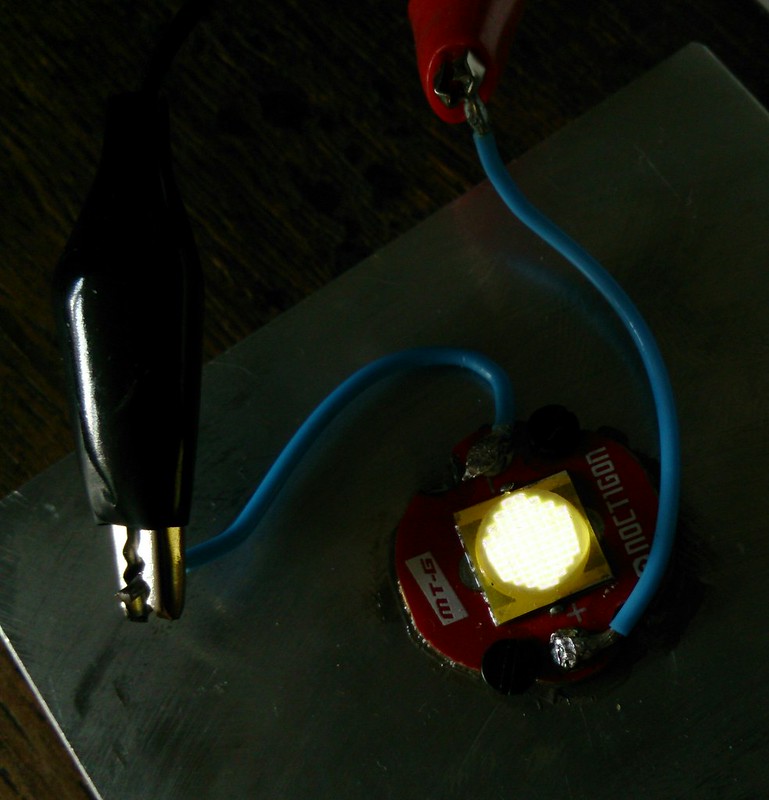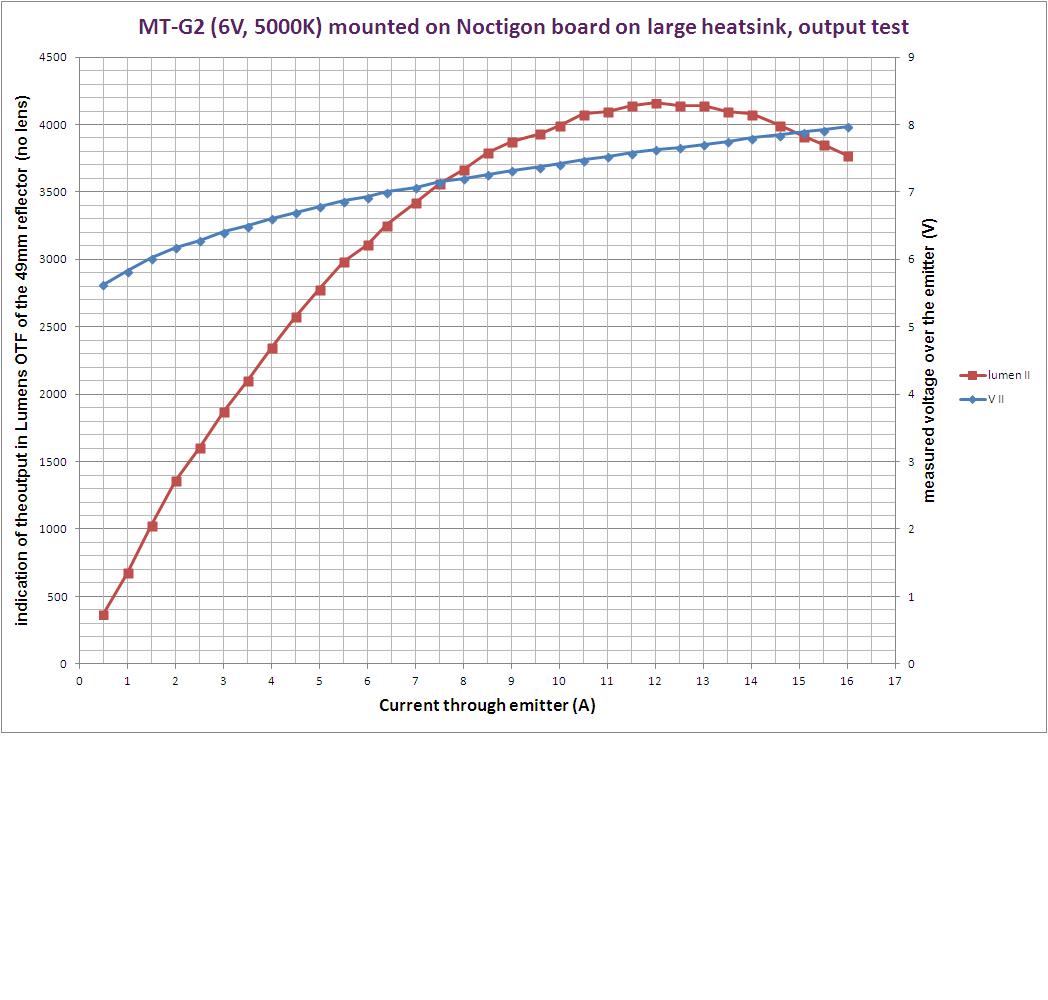....and it survived 
 :
:

(the MT-G2 after the test, 0.5mA from led-tester)
Ignoring family life once more (girlfriend slowly turning from understanding to quite annoyed) I did some rough testing on a MT-G2 6V 5000K mounted on a Noctigon board and a load of aluminium last night. The test set-up was the same as my more limited MT-G2 test recently, but with a heavier power supply and even heavier leads (16 amp electrical wire for home installation, well soldered to plugs and clamps). The led was so expensive that despite being me I even did the test a bit more thorough than usual, it resulted in even three video's  . If they are just too boring to watch (I don't blame anyone who finds watching changing digits for many minutes boring): I will make a nice graph of the data when I have time again to do that, it will take a few days.
. If they are just too boring to watch (I don't blame anyone who finds watching changing digits for many minutes boring): I will make a nice graph of the data when I have time again to do that, it will take a few days.
EDIT: I did the graph, it is in post #16
EDIT: I did a direct drive mod too, post #27
In the first video i turned the current up to 7 amps and used my DMM to check the current reading from the power supply. The DMM gave a reading about 5% lower than the current in the display of the power supply.
I find that close enough  .
.
In the second video I used the DMM to measure the voltage directly at the thick and short led wires to get a Vf reading. I trusted the current reading of the power supply. I measured to over 10 amps (you have to look at the video to see how far beyond the 10 amps :evil: ) and found that (you were right comfy !) the output diminishes long before the led blows (in fact I stopped before that). The fairly chunky heatsink eventually even got too hot to touch (120W in the end), so temperature effects may have influenced the results at higher currents. The complete set-up was identical to the XM-L2 test I did a few days ago, so the results are directly comparable. the ceiling bounce lux-readings multiplied by 2.06 give an indication of the number of lumens coming out of the 49mm reflector that was on top of the led (as with the xml2 test, there was no lens on the reflector). One result from the video: going higher than 7 amps does not give significant more output, very close to maximum output is reached at 9 amps. If this experiment with this one led is an indication of how the MT-G2 performs in a flashlight, there is a no need to go higher than that.
After the torture of the second test, I let the set-up cool down to room temperature and did a third run, up to 7 amps to see how much the led had suffered from the high current. I have not looked at the numbers very closely, but it looks like the led survived well, but output has become just a bit lower (don't blame the led for that, after what has been done to it  )
)
So that's it, the led is going to live another life in a future flashlight build. The graph may take some days, when I have the time to make it . EDIT: added graph, in post #16. Thanks for reading




 )
)
 . The led alone will produce -apart from emitted light- about 30W of heat at that current, so the build needs a good thermal path and sufficient surface area on the outside of the light.
. The led alone will produce -apart from emitted light- about 30W of heat at that current, so the build needs a good thermal path and sufficient surface area on the outside of the light. .
.